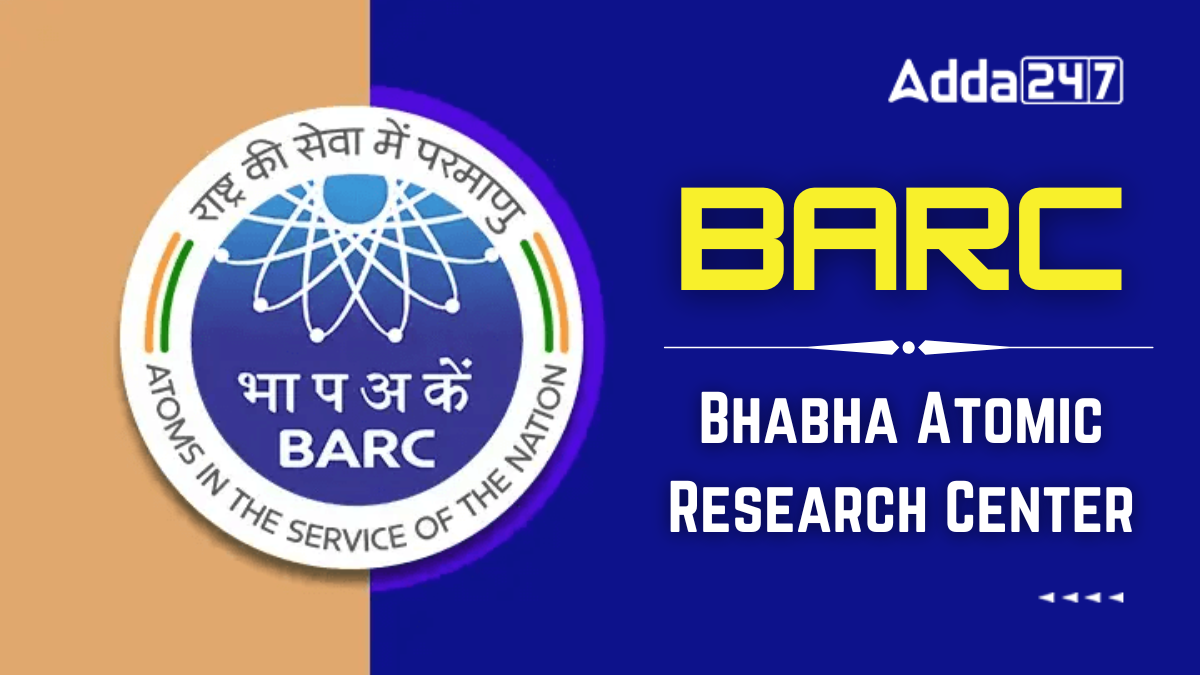The Bhabha Atomic Research Center (BARC) stands as a cornerstone of India’s nuclear advancements, driving research and innovation in a variety of scientific fields to ensure the nation harnesses nuclear energy for peaceful and progressive purposes. Established in 1954 by visionary scientist Dr. Homi Jehangir Bhabha, BARC embodies the commitment to transform atomic science into a powerful asset for national development and global competitiveness. In this article, Adda247 has given you detailed information about BARC full form, history, motto etc.
BARC Full Form
BARC, or the Bhabha Atomic Research Center, reflects the rapid evolution of modern science and technology. As the world continues to advance at an unprecedented pace, staying ahead of these developments is crucial. In today’s global landscape, nuclear capability represents a key measure of power and progress, and BARC stands at the forefront of India’s pursuit of excellence in this field. It symbolizes the nation’s commitment to leveraging nuclear energy for innovation, sustainability, and global influence in 2024 and beyond.
BARC: Overview
The Bhabha Atomic Research Center (BARC) is India’s premier nuclear research institution, functioning under the Department of Atomic Energy (DAE), which operates under the direct oversight of the Prime Minister. Headquartered in Trombay, Mumbai, BARC plays a pivotal role in advancing a wide range of scientific fields. In 2024, its multidisciplinary focus spans nuclear science, chemical engineering, materials science and metallurgy, electronic instrumentation, biotechnology, supercomputing, high-energy and plasma physics, all contributing to India’s nuclear program and its broader scientific goals. BARC continues to drive innovation for the nation’s strategic and sustainable development.
BARC History
When India gained independence in 1947, the country faced the challenge of catching up with global scientific and technological advancements, particularly in nuclear energy, which was becoming a symbol of power among nations. Recognizing the need to establish India as a leader in this domain, Dr. Homi Jehangir Bhabha, a visionary scientist, founded the Atomic Energy Establishment, Trombay (AEET) in January 1954 to drive nuclear research and development. After his untimely death in 1967, AEET was renamed the Bhabha Atomic Research Center (BARC) to honor his immense contributions as the father of India’s nuclear program.
BARC: Motto
BARC’s primary objective is to achieve nuclear self-reliance for India, a goal reflected in its motto: “Atoms in the Service of the Nation.” This motto perfectly encapsulates BARC’s mission of harnessing nuclear energy for the country’s progress, ensuring that atomic science serves the greater good in areas like energy, health, agriculture, and national security.
BARC – Roles and objectives
Recognizing the critical need for nuclear energy, Dr. A.P.J. Abdul Kalam once stated, “Nuclear power is our gateway to a prosperous future.” The Bhabha Atomic Research Center (BARC) plays a pivotal role in advancing nuclear technology and ensuring progress in India. Its key mandates encompass:
- Peaceful Applications of Nuclear Energy: Promoting the use of nuclear energy for non-military purposes.
- Comprehensive Management of Nuclear Power Generation: Overseeing all aspects of nuclear power, from theoretical reactor design to computer modeling and simulation.
- Risk Analysis and Development: Conducting research and testing for new reactor fuels, materials, and safety protocols.
- Safe Disposal of Nuclear Waste: Ensuring the secure and responsible management of nuclear waste materials.
- Industrial Applications of Isotopes: Utilizing isotopes in various industrial processes.
- Radiation Technologies: Applying radiation technologies to enhance health, food safety, medicine, agriculture, and environmental sustainability.
Through these initiatives, BARC is committed to leveraging nuclear energy for the nation’s development and prosperity.
Reactors in BARC
India’s nuclear journey began with pioneering reactors that have significantly advanced the country’s research capabilities and energy independence. Among these, the APSARA-U, APSARA, ZERLINA, and CIRUS reactors have played crucial roles in shaping India’s nuclear landscape, each contributing unique innovations and applications to the field of nuclear science.
APSARA-U
This state-of-the-art reactor uses domestically developed depleted uranium fuel in the form of uranium silicide. On September 2018, the Apsara-upgraded reactor, known as Apsara-U, achieved a significant milestone by reaching criticality. Notably, it has an innovative design that incorporates a warm water layer on the surface of the reactor pool, a first for India, aimed at minimising radiation exposure. This advancement is a significant step in enhancing safety and access in nuclear research.
APSARA
This pool reactor operates at a capacity of 1 megawatt, using 4.5 kg of enriched uranium wafers as its fuel source. In 1956, APSARA became a phenomenal achievement by becoming the first nuclear reactor to achieve criticality in India. To facilitate the nuclear reaction, it uses light water as both coolant and moderator, marking a significant step in the country’s nuclear research and development efforts.
ZERLINA
The ZERLINA reactor, which utilized natural uranium metal as fuel, achieved criticality on January 1961. This facility primarily focused on reactor research and investigations during its operational years. However, it was decommissioned in 1983 after fulfilling its research purposes.
CIRUS
Developed in collaboration with a Canadian research organization, the CIRUS reactor became operational on July 1960. Additionally, CIRUS is used for fuel testing, material irradiation, and production of radioisotopes for medical purposes. It serves a variety of applications, primarily focusing on condensed matter research using neutron beams. It also plays a role in neutron activation studies, benefiting both the agricultural and industrial sectors.
Establishing a Foundation for Nuclear Science in India
Dr. Homi Jhangir Bhabha initiated India’s nuclear program by establishing the Tata Institute of Fundamental Research (TIFR) in 1945. In 1954, he founded the Atomic Energy Establishment, Trombay (AEET) to pursue nuclear power development. After his death in 1966, AEET was renamed the Bhabha Atomic Research Centre (BARC), which has since become a leading research institute in the field.




 AFCAT Eligibility Criteria and Age Limit...
AFCAT Eligibility Criteria and Age Limit...
 AFCAT Previous Year Papers, Download PDF
AFCAT Previous Year Papers, Download PDF
 CDS Previous Year Question Papers, Downl...
CDS Previous Year Question Papers, Downl...





